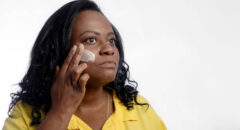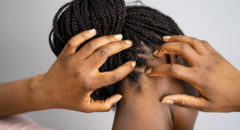
Seborrheic dermatitis is a common skin condition that affects millions of people worldwide. It is often characterized by red, inflamed skin with flaky scales that may appear oily or greasy. Although it is not life-threatening, seborrheic dermatitis can cause discomfort and embarrassment, impacting quality of life. This article will explore what seborrheic dermatitis is, its causes, symptoms, and available treatments.
What is Seborrheic Dermatitis?
Seborrheic dermatitis is a chronic inflammatory skin disorder that primarily affects areas of the body rich in oil (sebaceous) glands. It often occurs on the scalp, face (particularly around the nose and eyebrows), chest, and upper back. The condition manifests in the form of red, flaky patches of skin that may be itchy, swollen, or greasy in appearance.
This skin condition is also known for its recurrence, meaning that while treatments may relieve symptoms, flare-ups can occur. It’s most commonly seen in:
- Infants: Known as “cradle cap,” which appears as scaly patches on the scalp.
- Adults: Particularly between the ages of 30 and 60.
- Individuals with weakened immune systems: Those with conditions like HIV/AIDS, Parkinson’s disease, or cancer may experience more severe symptoms.
Causes of Seborrheic Dermatitis
The exact cause of seborrheic dermatitis isn’t entirely understood, but several factors are believed to contribute:
1. Overgrowth of Malassezia Yeast
Malassezia is a type of yeast found on the skin of most adults. In people with seborrheic dermatitis, this yeast is thought to grow excessively, leading to inflammation and irritation in oily areas of the skin. It feeds on the oils (sebum) produced by the sebaceous glands, and its byproducts may trigger the immune system, resulting in symptoms.
2. Genetic Predisposition
There is evidence that genetics play a role in determining who develops seborrheic dermatitis. If family members have the condition, there may be a higher likelihood that others in the family will as well.
3. Environmental Factors
External factors such as climate, stress, and seasonal changes can exacerbate the condition. Cold and dry weather can worsen symptoms, while stress is known to trigger flare-ups in some individuals.
4. Hormonal Changes
Fluctuations in hormones, particularly during adolescence or pregnancy, can contribute to the onset or exacerbation of seborrheic dermatitis.
5. Underlying Health Conditions
Certain health issues, such as neurological conditions (e.g., Parkinson’s disease) and compromised immune systems (e.g., HIV), are linked to a higher prevalence and severity of seborrheic dermatitis.
Symptoms of Seborrheic Dermatitis
Seborrheic dermatitis can present with a range of symptoms depending on its severity. Common signs include:
- Red, inflamed patches of skin: Typically on the scalp, face, and other oily areas.
- Greasy-looking scales: These flakes are often white or yellow and can stick to the hair or skin.
- Itchiness: A common symptom that can range from mild to severe, leading to discomfort.
- Crusting or scaling: Particularly on the scalp (resembling dandruff) or in areas like the eyebrows and beard.
In infants, seborrheic dermatitis may show up as thick, crusty patches on the scalp (cradle cap) but usually resolves on its own.
Treatment Options for Seborrheic Dermatitis
Although there is no cure for seborrheic dermatitis, there are several effective treatments to help manage and reduce symptoms. Treatment strategies often depend on the severity of the condition and the area affected.
1. Topical Antifungal Treatments
Since the Malassezia yeast is believed to contribute to seborrheic dermatitis, antifungal treatments such as ketoconazole or ciclopirox shampoos and creams are often used. These products help reduce the yeast on the skin and can alleviate symptoms.
2. Medicated Shampoos
Medicated shampoos containing ingredients like zinc pyrithione, selenium sulfide, coal tar, or salicylic acid are commonly used for treating seborrheic dermatitis on the scalp. These shampoos help to reduce flaking and scaling while relieving itching.
3. Steroid Creams or Ointments
In cases where inflammation is significant, doctors may prescribe low-dose corticosteroid creams or lotions. These reduce redness and swelling but should be used sparingly and only under medical supervision, as prolonged use can thin the skin and cause other side effects.
4. Calcineurin Inhibitors
Topical calcineurin inhibitors, such as tacrolimus and pimecrolimus, are non-steroidal options that can help control inflammation in sensitive areas like the face. These are often recommended for long-term use to avoid the side effects associated with steroids.
5. Lifestyle Modifications
Managing seborrheic dermatitis also involves addressing potential triggers:
- Regular cleansing: Using gentle cleansers and moisturizing regularly can prevent buildup of oils that may trigger flare-ups.
- Stress management: As stress can trigger or worsen seborrheic dermatitis, relaxation techniques like yoga, meditation, or regular physical activity can help.
- Dietary adjustments: While no specific diet is proven to prevent seborrheic dermatitis, some find that reducing sugar and processed foods may improve their symptoms.
6. Phototherapy
In more severe or resistant cases, light therapy (using UV light) may be recommended by dermatologists to help reduce symptoms. This form of treatment is usually conducted in a clinical setting.
When to See a Doctor
While many people can manage seborrheic dermatitis with over-the-counter treatments and self-care strategies, you should consult a healthcare professional if:
- Symptoms are severe or widespread.
- Over-the-counter treatments aren’t effective.
- You experience signs of infection, such as swelling, pus, or pain.
- You have a weakened immune system or other underlying conditions that may complicate treatment.
Seborrheic dermatitis is a common, chronic skin condition that affects people of all ages. While it can be uncomfortable and unsightly, it is manageable with proper treatment and care. By understanding its causes and triggers, individuals can work with their healthcare providers to find effective treatments that reduce flare-ups and help maintain skin health.








